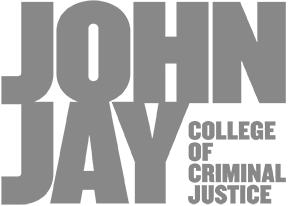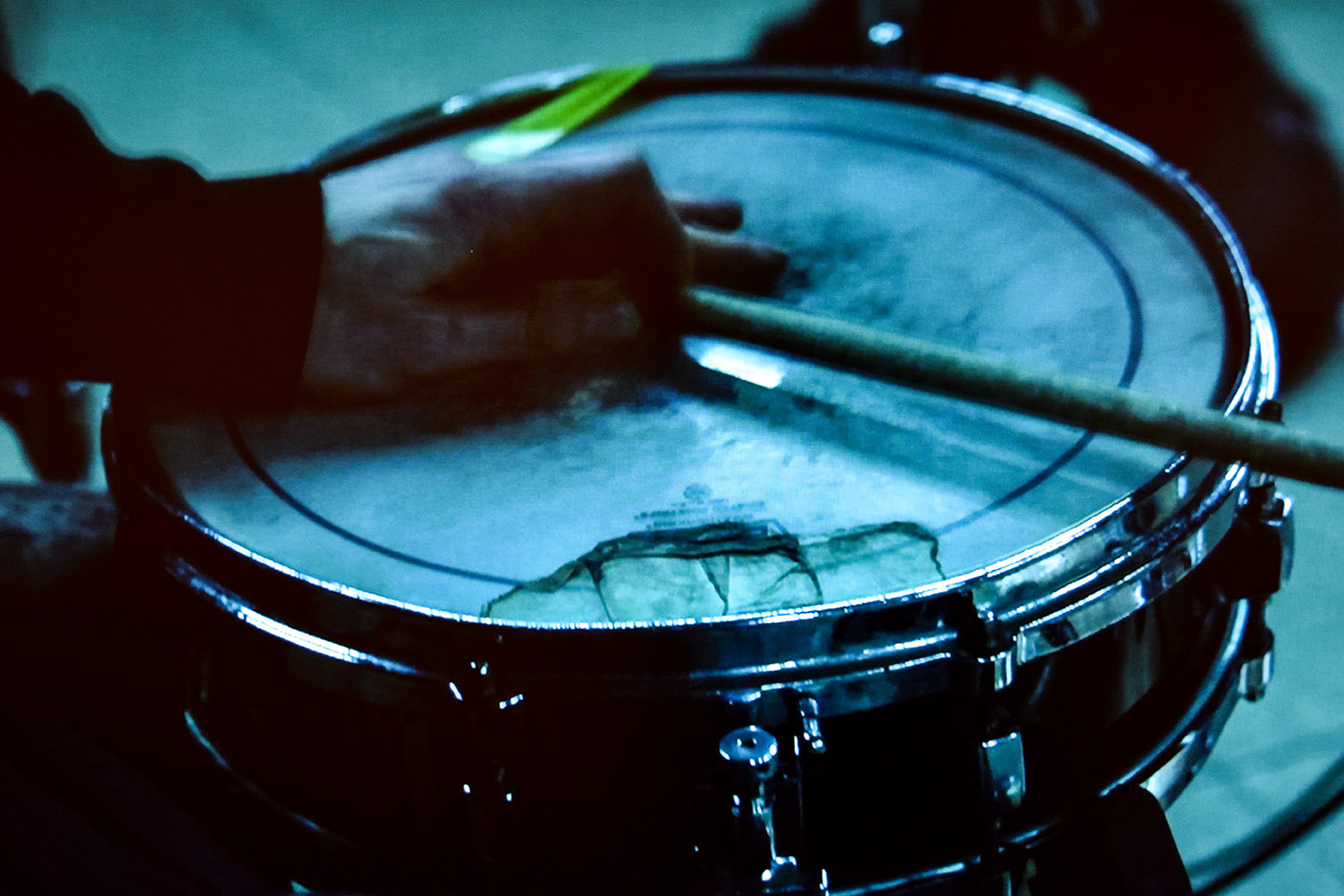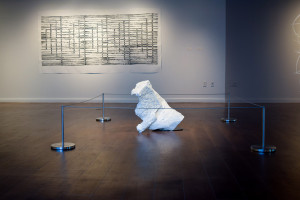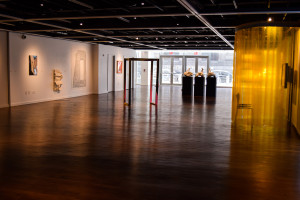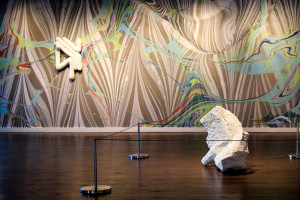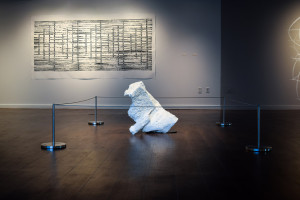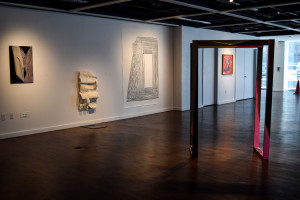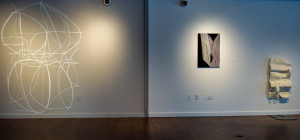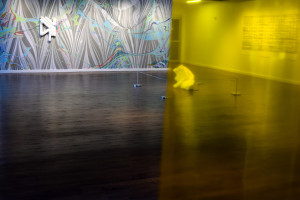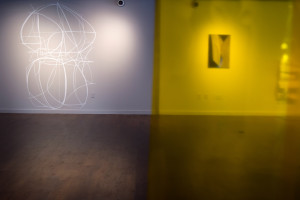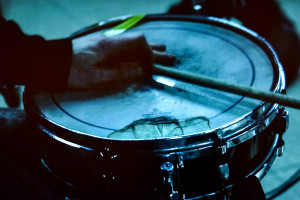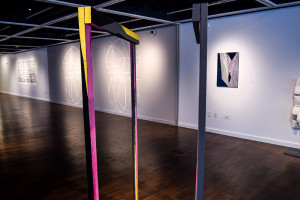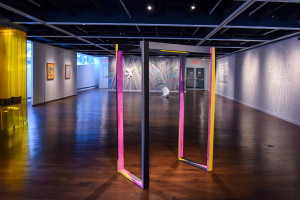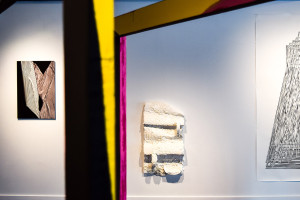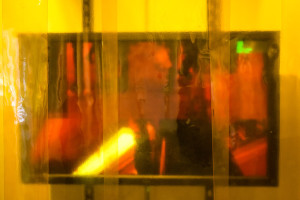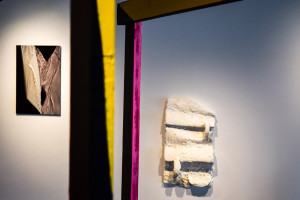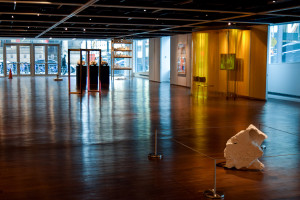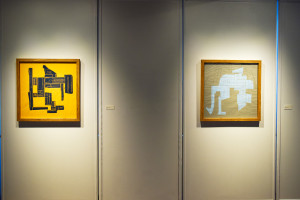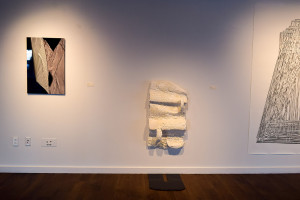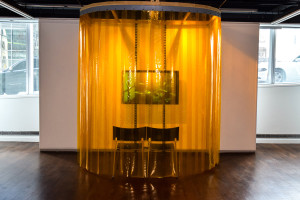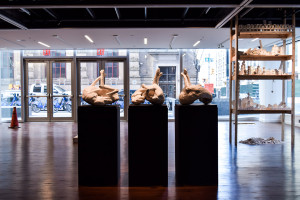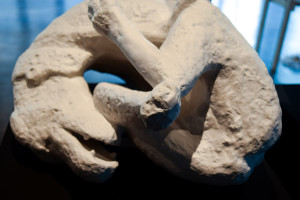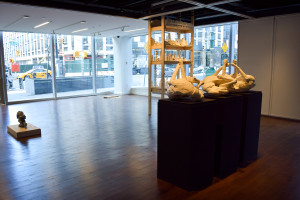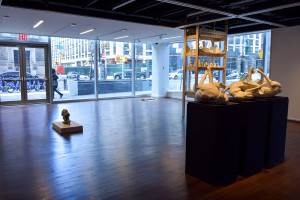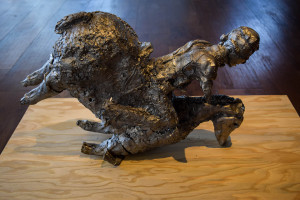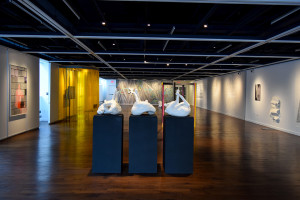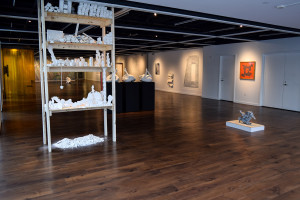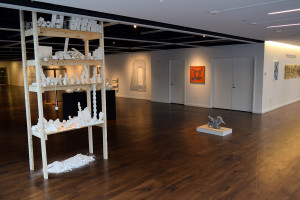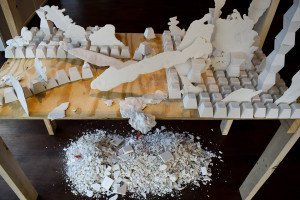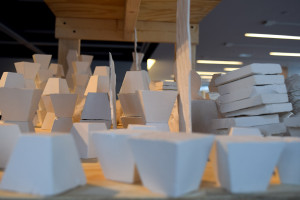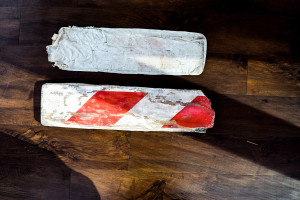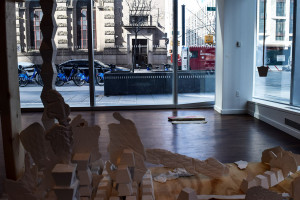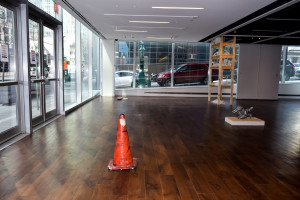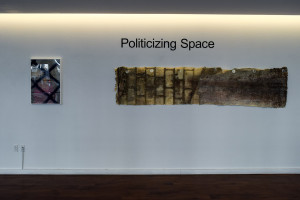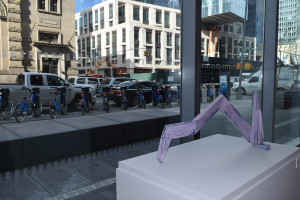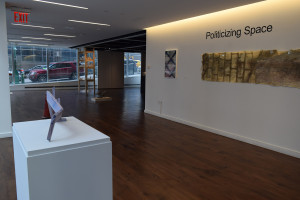On view from February 2, 2017 – March 31, 2017
The architecture and art of the urban space can be used to control the lives of its inhabitants; they can restrain their movements and install hierarchies beneficial to those in power. The eleven artists in Politicizing Space critique and subvert these purportedly aesthetic and artistic gestures by reinterpreting the symbolic mechanisms of control. Also under consideration is the age-old question of the balance of power between the art object and the viewer and the inherent competition for the domination of the given locale.
The chain link fences in the work of Paul Anthony Smith are a direct reference to the intent to posses and to dominate. The formal beauty of the presentation only underscores the clarity of the message – there is a danger in trespassing or any other attempt to usurp part of a “claimed” space.
Similarly the traffic signs in the work of Filipe Cortez deal with places we are forbidden to access and the ease and simplicity by which the movements of urban residents can be manipulated and controlled. The city environment can be harsh and defensive; implements both physical and legal are created to guard the possession of space. These real and imagined tools are referenced in the work of Lan Tuazon. Her series Parking Lot Landscapes (2010) addresses control through property. Public or private parking spaces are some of the prime possessions in the city’s structure and as such are also an embodiment of ownership and nascent strife.
Nowhere is power expressed more acutely than in the equestrian sculptures serving as the symbolic apex of public spaces worldwide. However the mighty ones, and their monuments, are frequently subverted by the course of events, as in the case of the ill-fated gilt-lead sculpture of George III on horseback at Bowling Green in downtown Manhattan. In the work of William Corwin, Poor Dead King (2017), it becomes a parable of such fate.
Complementing the look from above is the view from below: the unenviable position of living underground and creating the most basic primal structure for sheer survival. Andrew Ross’s Secret Lives of Mole People (2017) addresses the issues of total disenfranchisement, and more importantly, the rhetoric of the demonization of “the other.”
Curiosity may have doomed the feline, but servitude killed the dog. Chained in the entryway of Pompeii home when Vesuvius erupted in 79 AD, a dog struggled and ultimately asphyxiated under layers of fine ash that in turn perfectly preserved shape of its body. As the organic material disintegrated, the form became a mold that allowed Allan McCollum’s cast The Dog From Pompei, 1990/91. The work epitomizes the devastation of a cataclysmic disaster in an urban environment.
Several artists reinterpret classical and pre-modern art tropes. Carin Riley’s Caryatid Wall Drawings (2017) reference the sculptures of female figures used in classical Greek architecture as structural support. The support can read not only as architectural, but in a larger sense it also functions as a metaphor of female importance in Ancient Greece. Similarly the interest in classical themes of balance and symmetry informs Reverb No.13 (2013) by Kara Rooney. Her pieces, often guided by interest in history, linguistics and literature, can also be confrontational in the complexity of meaning and competition for viewers’ space. David Goodman’s Monolith (2017) deals with properties of painting as well as sculpture and with a scale that reaches architectural proportions. It claims space in way analogous to a monumental entryway and engages the concept of the triumphal arch and/or the gateway. In her large drawings Frauke Schlitz investigates the phenomena of architecture and topography and the relationships that develop while we perceive, or mentally navigate, through the man-made spaces. Lauren Clay, like Goodman and Schlitz, engages with architecture. She generates surrogate surfaces by enlarging marbleized pigment patterns and laminating them onto existing walls and architectural details. These are transformed into panoramic vistas full of twists and turns of an almost psychedelic nature.
As we are entering a political climate of self-mythologizing and interpretation of events bearing little or no reference to actual history or data, we are also witnessing the return of architectural and urban strategies that reinforce class-structures and inequality. Events in the twentieth century, as well as the very recent ones, remind us that politically minded contortions and suppression of the once thriving metropolis are not relegated to history. We have to be vigilant in the pursuit of rational management of resources and suppression of aggressive behavior so that a similar fate does not befall cities worldwide. Art can be an important tool in such efforts.
Curated by Charlotta Kotik
On view from February 2, 2017 – March 31, 2017 The architecture and art of the urban space can be used to control the lives of its inhabitants; they can restrain their movements and install hierarchies beneficial to those in power. The eleven artists in Politicizing Space critique and subvert these purportedly aesthetic and artistic […]
